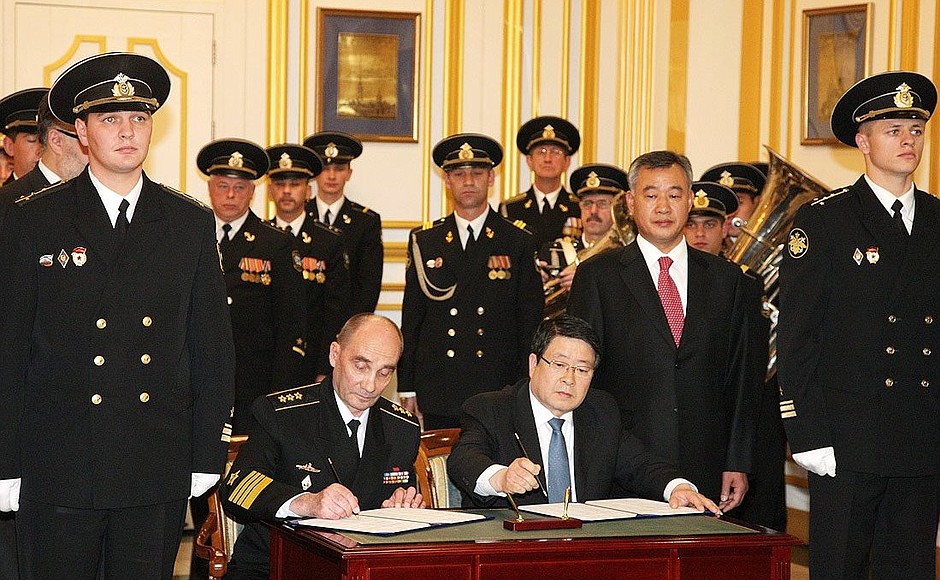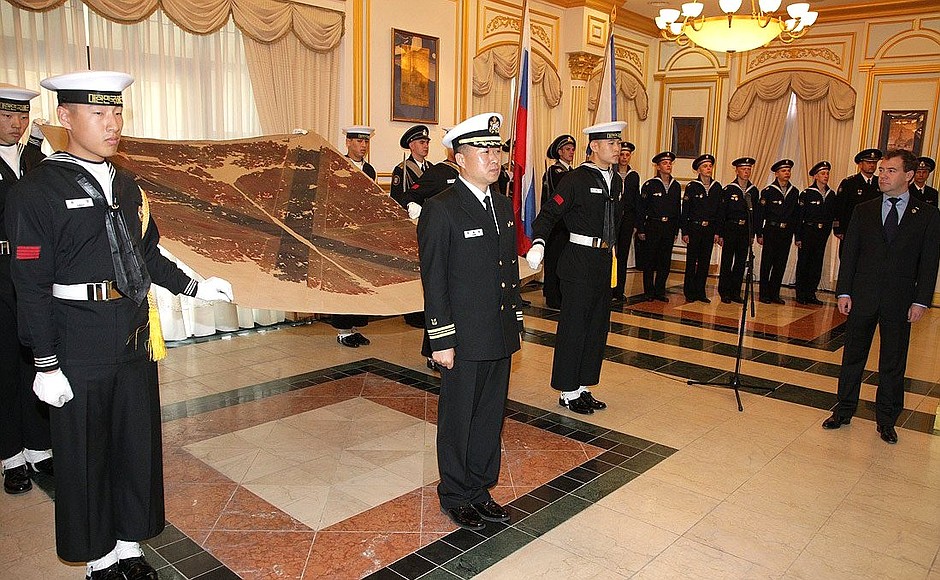In one of the first battles of the Russo-Japanese War of 1904–1905, the Varyag cruiser faced an unequal fight with a Japanese squadron of 14 warships in the Korean port of Jemulpo (now Incheon). The Varyag was badly damaged, and its commander Vsevolod Rudnev gave order to sink the cruiser to prevent it from being captured by the enemy. In 1905, the Japanese lifted the cruiser from the seabed. Later the Varyag relics were displayed in a museum in Korea.
* * *
President of Russia Dmitry Medvedev: Mr Mayor, ladies and gentlemen,
I am happy to welcome you on this momentous occasion in our history and in the history of Russian-Korean relations. Indeed, the transfer of the Varyag cruiser flag has a special, symbolic meaning for us because, on the one hand, it is the memory of an unprecedented act of bravery by the Varyag cruiser crew and on the other hand, it is a symbol of new, very warm relations between the Russian Federation and the Republic of Korea.
I would like to express our gratitude to the Incheon mayor’s office and the museum for their decision to transfer the Varyag cruiser flag to the Russian Federation for safekeeping. It gives us great pleasure that this event is taking place now, during the Russian President’s official visit to the Republic of Korea. This is yet another example, another sign of good relations between our states.
This is very important for future generations too. That is why today, as we accept the Varyag cruiser flag, we pay tribute to the heroism of our sailors, and at the same time try to show that there is room for achievement in everyone’s life. We hope that the proper safekeeping we will ensure will allow young generations of Russians to look up to the feat committed by their ancestors many years ago.
Once again, I would like to thank everyone who participated in the preparation of this event, and express my hope that it will strengthen the friendly ties between our countries and our cities.
I wish you every success.
Thank you.


